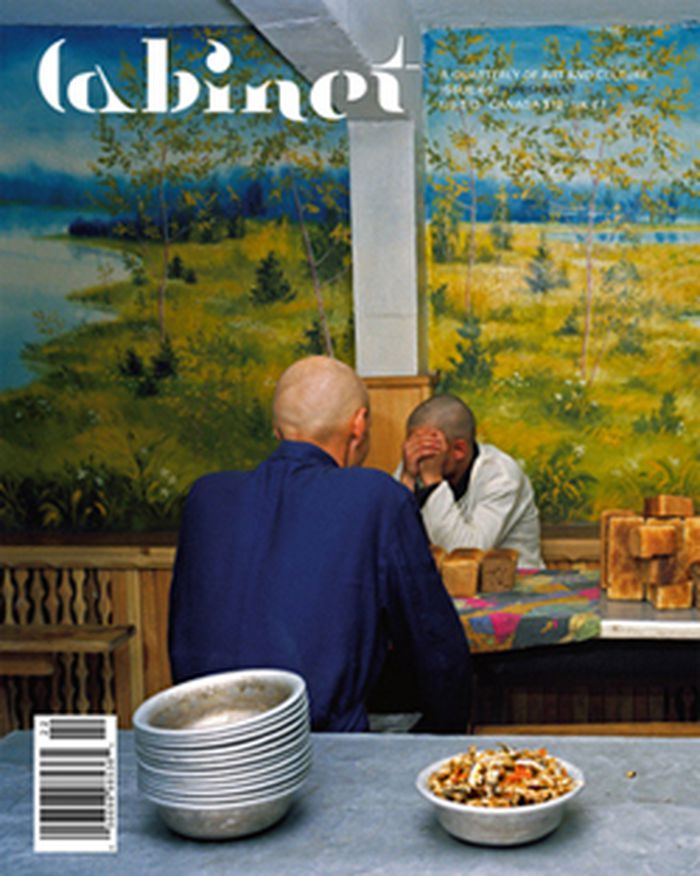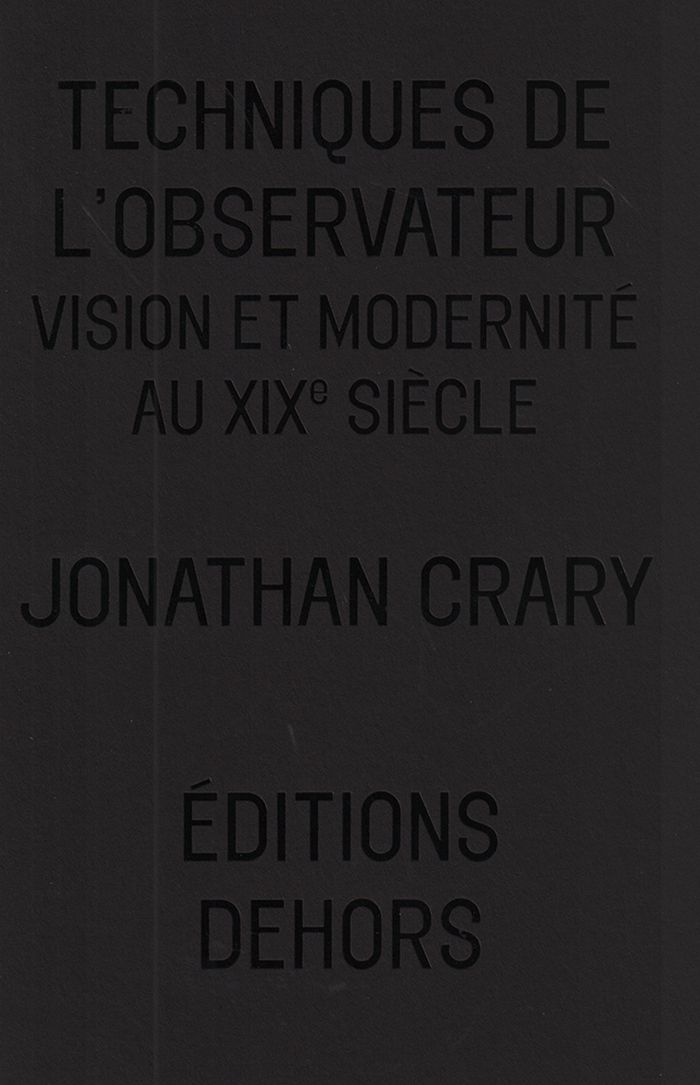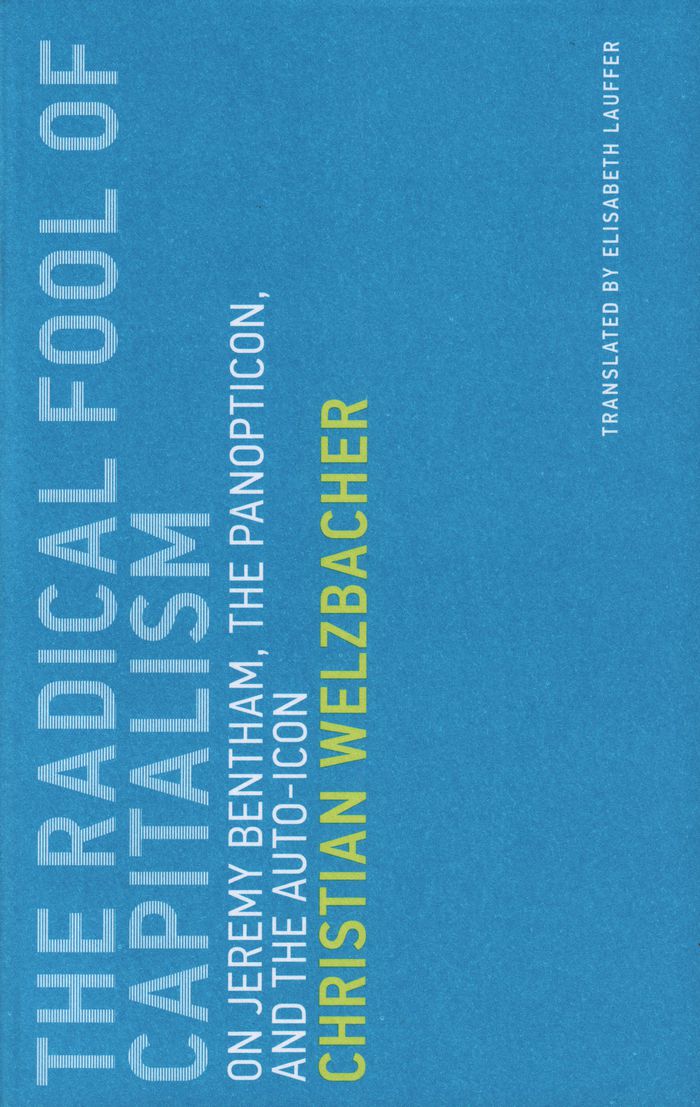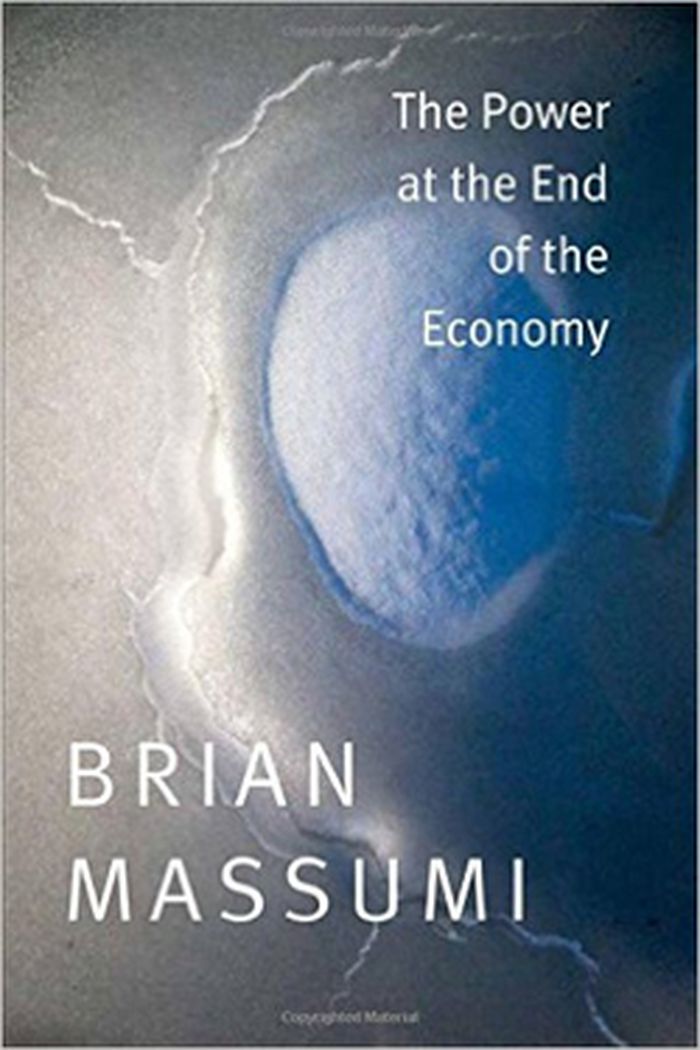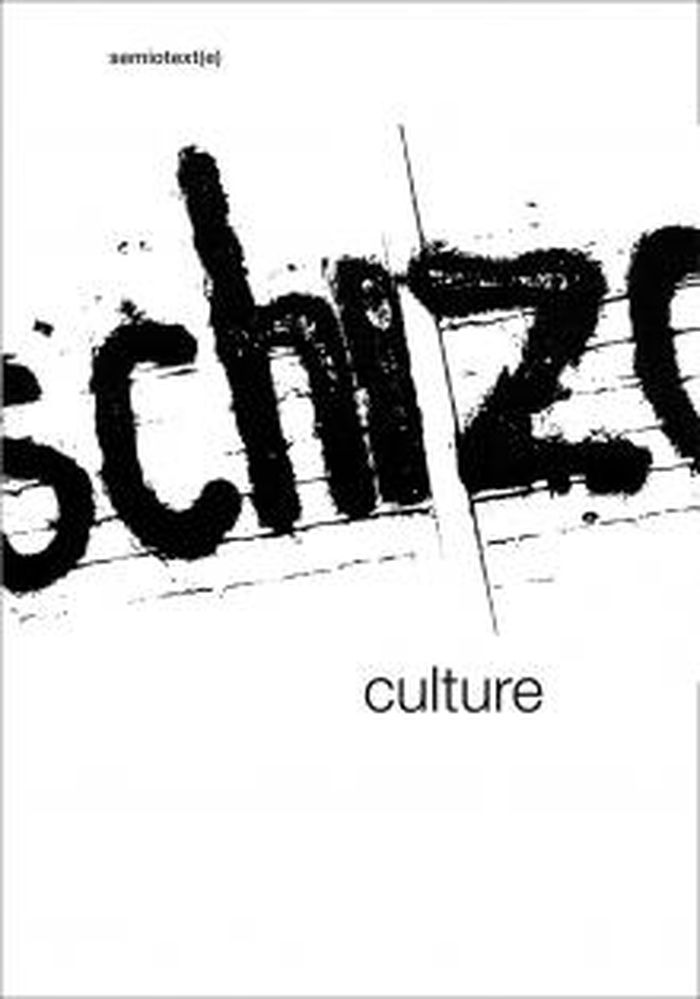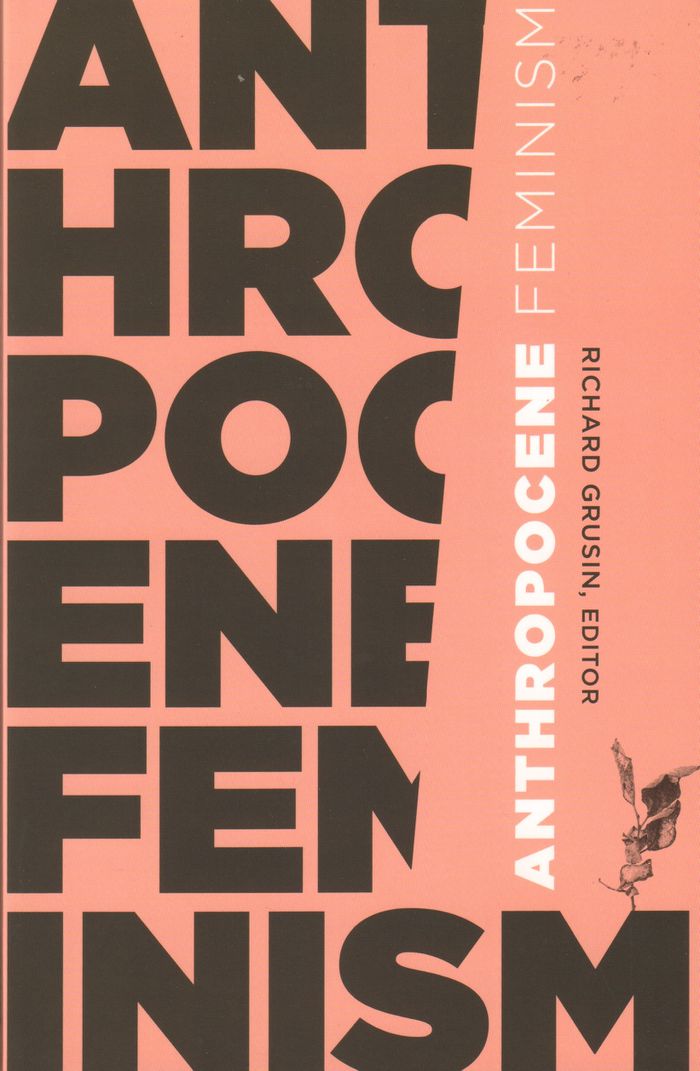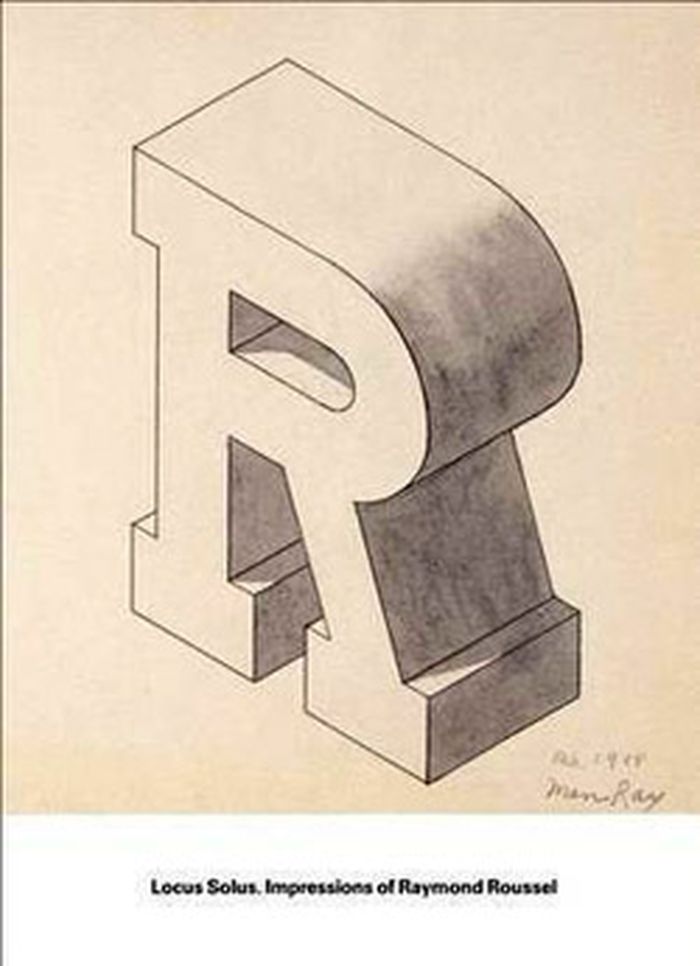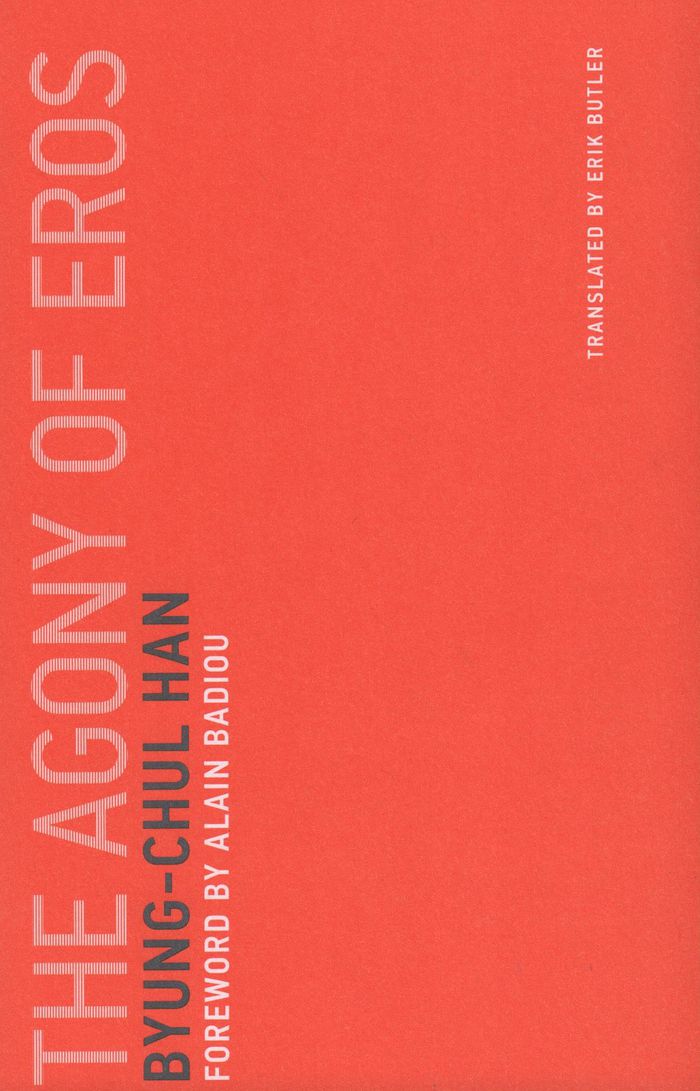Cabinet 46: punishment
$12.00
(disponible sur commande)
Résumé:
From the rule of "an eye for an eye" in the Code of Hammurabi and the Old Testament to the rise of the reforming "penitentiary" in the nineteenth century, from Kant's notion of the right of retaliation to historical-philosophical explorations by Michel Foucault and John Rawls, the question of punishment has long been central to religious, political and philosophical(...)
Cabinet 46: punishment
Actions:
Prix:
$12.00
(disponible sur commande)
Résumé:
From the rule of "an eye for an eye" in the Code of Hammurabi and the Old Testament to the rise of the reforming "penitentiary" in the nineteenth century, from Kant's notion of the right of retaliation to historical-philosophical explorations by Michel Foucault and John Rawls, the question of punishment has long been central to religious, political and philosophical discourse. Cabinet issue 46, with a special section on Punishment, features Gregory Whitehead on the legacy of Philip Zimbardo's controversial "prison experiments" at Stanford University; Justin E.H. Smith on punishment and sacrifice; Johan Lindqvist on music and torture; and a multi-generational conversation about corporal punishment in the home. Elsewhere in the issue: an interview with Robert N. Proctor on how diamonds were made into the most precious of gems; George Prochnik on the history of tattoos; and Marius Kwint on the Cornell Brain Club.
Revues
$35.95
(disponible sur commande)
Résumé:
De quand date la naissance de l’observateur moderne? L’histoire culturelle et la théorie de l’art ont souvent identifié deux points d’origine : la révolution picturale des années 1860 et l’invention de la photographie quelques décennies plus tôt. Pour Jonathan Crary, c’est au tournant du XIXe siècle que s’opère, non pas une mutation de l’imagerie, mais une transformation(...)
Techniques de l'observateur: vision et modernité au XIXe siècle
Actions:
Prix:
$35.95
(disponible sur commande)
Résumé:
De quand date la naissance de l’observateur moderne? L’histoire culturelle et la théorie de l’art ont souvent identifié deux points d’origine : la révolution picturale des années 1860 et l’invention de la photographie quelques décennies plus tôt. Pour Jonathan Crary, c’est au tournant du XIXe siècle que s’opère, non pas une mutation de l’imagerie, mais une transformation de la subjectivité, lorsque la figure de l’observateur investit le champ esthétique, la médecine et la philosophie. Bien que vieille de deux siècles, cette discrète révolution dans la culture visuelle occidentale est encore la nôtre. Elle accompagne l’essor de la société disciplinaire tout en préparant l’avènement de la société du spectacle – ainsi que de leurs prolongements actuels. En relisant Michel Foucault, Guy Debord et les penseurs critiques de la modernité, Crary nous invite à un voyage intellectuel érudit et provoquant parmi les arts et les savoirs qui l’ont construite. 'Techniques de l’observateur' opère un retour aux sources historiques de notre attention visuelle et de ses enjeux subjectifs et politiques.
Théorie/ philosophie
$26.00
(disponible sur commande)
Résumé:
A fresh interpretation of Jeremy Bentham, finding that his “radical foolery” embodied a social ethics that was revolutionary for its time. Jeremy Bentham (1748–1832) is best remembered today as the founder of utilitarianism (a philosophy infamously abused by the Victorians) and the conceiver of the Panopticon, the circular prison house in which all prisoners could be(...)
The radical fool of capitalism: on Jeremy Bentham, the Panopticon, and the auto-icon
Actions:
Prix:
$26.00
(disponible sur commande)
Résumé:
A fresh interpretation of Jeremy Bentham, finding that his “radical foolery” embodied a social ethics that was revolutionary for its time. Jeremy Bentham (1748–1832) is best remembered today as the founder of utilitarianism (a philosophy infamously abused by the Victorians) and the conceiver of the Panopticon, the circular prison house in which all prisoners could be seen by an unseen observer—later seized upon by Michel Foucault as the apotheosis of the neoliberal control society. In this volume in the Untimely Meditation series, Christian Welzbacher offers a new interpretation of Bentham, arguing that his “radical foolery” (paraphrasing Goethe's characterization of Bentham) actually embodied a social ethics that was new for its time and demands proper historical contextualization rather than retroactive analysis from the vantage point of late capitalism. Welzbacher provides just such an analysis, offering an account of the two great utilitarian projects that occupied Bentham all his life: the Panopticon and the Auto-Icon.
Théorie/ philosophie
livres
The Panopticon writings
$23.95
(disponible sur commande)
Résumé:
The Panopticon project for a model prison obsessed the English philosopher Jeremy Bentham for almost 20 years. In the end, the project came to nothing; the Panopticon was never built. But it is precisely this that makes the Panopticon project the best exemplification of Bentham's own theory of fictions, according to which non-existent fictitious entities can have all too(...)
The Panopticon writings
Actions:
Prix:
$23.95
(disponible sur commande)
Résumé:
The Panopticon project for a model prison obsessed the English philosopher Jeremy Bentham for almost 20 years. In the end, the project came to nothing; the Panopticon was never built. But it is precisely this that makes the Panopticon project the best exemplification of Bentham's own theory of fictions, according to which non-existent fictitious entities can have all too real effects. There is probably no building that has stirred more philosophical controversy than Bentham's Panopticon. It is not merely, as Foucault thought, "a cruel, ingenious cage", in which subjects collaborate in their own subjection, but much more - constructing the Panopticon produces not only a prison, but also a god within it. It is a machine which on assembly is already inhabited by a ghost. It is through the Panopticon and the closely related theory of fictions that Bentham has made his greatest impact on modern thought; above all, on the theory of power.
livres
janvier 2011
Théorie/ philosophie
The German issue
$34.95
(disponible sur commande)
Résumé:
Like a time capsule, The German Issue brings together all the major "issues" that were being debated on both sides of the Atlantic—which eventually found their abrupt resolution in 1989 with the fall of the Berlin Wall. It involved the most important voices of the period—from writers and filmmakers to anthropologists, activists and poets, terrorists and philosophers:(...)
The German issue
Actions:
Prix:
$34.95
(disponible sur commande)
Résumé:
Like a time capsule, The German Issue brings together all the major "issues" that were being debated on both sides of the Atlantic—which eventually found their abrupt resolution in 1989 with the fall of the Berlin Wall. It involved the most important voices of the period—from writers and filmmakers to anthropologists, activists and poets, terrorists and philosophers: Joseph Beuys, Michel Foucault, Christo, Christa Wolf, Walter Abish, Alexander Kluge, Paul Virilio, Ulrilke Meinhof, William Burroughs, Jean Baudrillard, Hans Magnus Enzenberger, Maurice Blanchot, Hans Jürgen Syberberg, Heidegger, André Gorz, Helke Sander. Opening with Christo's "Wrapping Up of Germany" and the celebrated dialogue between East German dramaturge Heiner Müller and Sylvère Lotringer on the Wall ("Mauer"), since published in many languages, The German Issue offers a first-hand account of the Western world on the threshold of a major global mutation. It also embodies at its best Semiotext(e)'s tenacious effort to establish a creative bridge between art and intellect, culture and politics, Europe and America.
Théorie/ philosophie
$32.95
(disponible sur commande)
Résumé:
Rational self-interest is often seen as being at the heart of liberal economic theory. In The Power at the End of the Economy Brian Massumi provides an alternative explanation, arguing that neoliberalism is grounded in complex interactions between the rational and the emotional. Offering a new theory of political economy that refuses the liberal prioritization of(...)
The power at the end of the economy
Actions:
Prix:
$32.95
(disponible sur commande)
Résumé:
Rational self-interest is often seen as being at the heart of liberal economic theory. In The Power at the End of the Economy Brian Massumi provides an alternative explanation, arguing that neoliberalism is grounded in complex interactions between the rational and the emotional. Offering a new theory of political economy that refuses the liberal prioritization of individual choice, Massumi emphasizes the means through which an individual’s affective tendencies resonate with those of others on infra-individual and transindividual levels. This nonconscious dimension of social and political events plays out in ways that defy the traditional equation between affect and the irrational. Massumi uses the Arab Spring and the Occupy Movement as examples to show how transformative action that exceeds self-interest takes place. Drawing from David Hume, Michel Foucault, Gilles Deleuze, Niklas Luhmann and the field of nonconsciousness studies, Massumi urges a rethinking of the relationship between rational choice and affect, arguing for a reassessment of the role of sympathy in political and economic affairs.
Théorie/ philosophie
Schizo culture
$42.00
(disponible sur commande)
Résumé:
The legendary 1975 “Schizo-Culture” conference, conceived by the early Semiotext(e) collective, began as an attempt to introduce the then-unknown radical philosophies of post-’68 France to the American avant-garde. The conference was equally important on a political level, and brought together a diverse group of activists, thinkers, patients, and ex-cons in order to(...)
Schizo culture
Actions:
Prix:
$42.00
(disponible sur commande)
Résumé:
The legendary 1975 “Schizo-Culture” conference, conceived by the early Semiotext(e) collective, began as an attempt to introduce the then-unknown radical philosophies of post-’68 France to the American avant-garde. The conference was equally important on a political level, and brought together a diverse group of activists, thinkers, patients, and ex-cons in order to address the challenge of penal and psychiatric institutions. The “Schizo-Culture” issue of the Semiotext(e) journal came three years later. Designed by a group of artists and filmmakers, it documented the chaotic creativity of an emerging downtown New York scene, and offered interviews with artists, theorists, writers, and No Wave and pre-punk musicians together with new texts from Deleuze, Foucault, R. D. Laing, and other conference participants. This slip-cased edition includes The Book: 1978, a facsimile reproduction of the original Schizo-Culture publication; and The Event: 1975, a previously unpublished and comprehensive record of the conference that set it all off. It assembles many previously unpublished texts.
Théorie/ philosophie
Anthropocene Feminism
$39.95
(disponible sur commande)
Résumé:
What does feminism have to say to the Anthropocene? How does the concept of the Anthropocene impact feminism? This book is a daring and provocative response to the masculinist and techno-normative approach to the Anthropocene so often taken by technoscientists, artists, humanists, and social scientists. By coining and, for the first time, fully exploring the concept of(...)
mars 2017
Anthropocene Feminism
Actions:
Prix:
$39.95
(disponible sur commande)
Résumé:
What does feminism have to say to the Anthropocene? How does the concept of the Anthropocene impact feminism? This book is a daring and provocative response to the masculinist and techno-normative approach to the Anthropocene so often taken by technoscientists, artists, humanists, and social scientists. By coining and, for the first time, fully exploring the concept of “anthropocene feminism,” it highlights the alternatives feminism and queer theory can offer for thinking about the Anthropocene. Feminist theory has long been concerned with the anthropogenic impact of humans, particularly men, on nature. Consequently, the contributors to this volume explore not only what current interest in the Anthropocene might mean for feminism but also what it is that feminist theory can contribute to technoscientific understandings of the Anthropocene. With essays from prominent environmental and feminist scholars on topics ranging from Hawaiian poetry to Foucault to shelled creatures to hypomodernity to posthuman feminism, this book highlights both why we need an anthropocene feminism and why thinking about the Anthropocene must come from feminism.
$49.95
(disponible sur commande)
Résumé:
Few writers have had a greater impact on the methods of art-making in the twentieth century than Raymond Roussel (1877-1933). Marcel Duchamp acknowledged Roussel as the foremost influence on his "Large Glass"; André Breton described him as the "greatest magnetizer of modern times"; and at least two generations of conceptual artists, from Allen Ruppersberg and Guy de(...)
Locus Solus : impressions of Raymond Roussel
Actions:
Prix:
$49.95
(disponible sur commande)
Résumé:
Few writers have had a greater impact on the methods of art-making in the twentieth century than Raymond Roussel (1877-1933). Marcel Duchamp acknowledged Roussel as the foremost influence on his "Large Glass"; André Breton described him as the "greatest magnetizer of modern times"; and at least two generations of conceptual artists, from Allen Ruppersberg and Guy de Cointet to Rodney Graham and Paul Etienne Lincoln have borrowed or adapted Roussel's "procédé" for writing, which involved selecting two similar-sounding words, elaborating them into two similar-sounding sentences and then "writing a tale which can start with the first and finish by the second." Reproducing a wealth of archival materials, artworks and writings, this volume - a kind of Roussel encyclopedia - assesses the writer's legacy in art for the first time. Alongside works by the above, it includes art by Max Ernst, Salvador Dalí, Joseph Cornell, Ree Morton and others; and writings on Roussel by Jean Cocteau, Paul Eluard, Michel Leiris, Duchamp, Dalí, Philippe Soupault, Ernst, Breton, Ruppersberg, Michel Foucault, Jacques Brunius and Michel Butor.
The Agony of Eros
$19.95
(disponible en magasin)
Résumé:
Byung-Chul Han is one of the most widely read philosophers in Europe today, a member of the new generation of German thinkers that includes Markus Gabriel and Armen Avanessian. In "The agony of Eros", a bestseller in Germany, Han considers the threat to love and desire in today’s society. For Han, love requires the courage to accept self-negation for the sake of(...)
The Agony of Eros
Actions:
Prix:
$19.95
(disponible en magasin)
Résumé:
Byung-Chul Han is one of the most widely read philosophers in Europe today, a member of the new generation of German thinkers that includes Markus Gabriel and Armen Avanessian. In "The agony of Eros", a bestseller in Germany, Han considers the threat to love and desire in today’s society. For Han, love requires the courage to accept self-negation for the sake of discovering the Other. In a world of fetishized individualism and technologically mediated social interaction, it is the Other that is eradicated, not the self. In today’s increasingly narcissistic society, we have come to look for love and desire within the “inferno of the same.” Han offers a survey of the threats to Eros, drawing on a wide range of sources—Lars von Trier’s film Melancholia, Wagner’s Tristan und Isolde, Fifty Shades of Grey, Michel Foucault (providing a scathing critique of Foucault’s valorization of power), Martin Buber, Hegel, Baudrillard, Flaubert, Barthes, Plato, and others. Han considers the “pornographication” of society, and shows how pornography profanes eros; addresses capitalism’s leveling of essential differences; and discusses the politics of eros in today’s “burnout society.” To be dead to love, Han argues, is to be dead to thought itself.
Théorie/ philosophie
